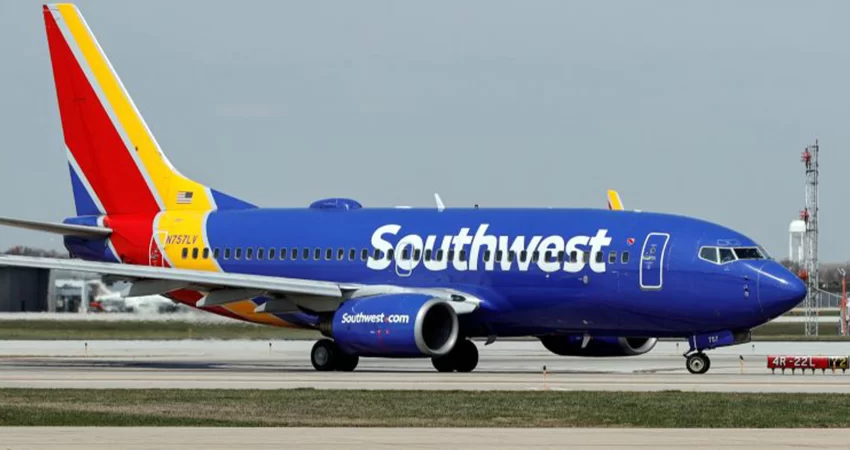Last month, a Southwest Airlines jet encountered an unusual aerial maneuver known as a Dutch roll during Flight 746 from Phoenix to Oakland, flying at approximately 34,000 feet. The Federal Aviation Administration (FAA) reported that the aircraft, a Boeing 737 Max 8 with registration N8825Q, suffered significant damage to its tail section due to this maneuver. The damage, including to the rudder’s standby power control unit (PCU), was discovered during a post-flight inspection, although the flight itself was completed without incident or injuries.
Following the incident, the airplane was returned to Boeing on June 6, according to tracking data from FlightAware. Boeing referred inquiries to Southwest Airlines, which directed questions to the FAA and the National Transportation Safety Board (NTSB).
The FAA, in collaboration with the NTSB and Boeing, is conducting an investigation into the Dutch roll incident. Southwest Airlines notified the NTSB promptly on June 7, leading to the initiation of an investigation. The NTSB’s Vehicle Recorder Laboratory in Washington has already received data from the aircraft’s digital flight data recorder, which will assist in determining the severity and duration of the event. However, the cockpit voice recorder only retains the last two hours of audio and was overwritten, rendering it unavailable for investigation. A preliminary report is expected within 30 days from the date of the incident.
Regarding aviation safety measures, recent FAA reauthorization legislation mandates that most U.S. commercial passenger aircraft install 25-hour cockpit voice recorders within six years.
Explaining what a Dutch roll entails, Ken Byrnes, assistant dean and associate professor of aeronautical science at Embry-Riddle Aeronautical University, described it as a combination of rolling and yawing motions in an aircraft. It typically occurs when the lateral and directional dynamics of the aircraft are unbalanced.
“Dutch roll is characterized by an oscillatory motion where the aircraft rolls due to the wing design (dihedral effect) and simultaneously yaws because of the adverse yaw effect from the sideslip angle,” Byrnes explained. This combined motion creates a dynamic instability causing the aircraft to oscillate in both roll and yaw directions.
Although Dutch rolls are uncommon in commercial aviation due to aircraft design mitigations, they can impose stress on the aircraft structure, as evidenced by the damage incurred in the Southwest incident. Previous instances of Dutch roll have led to mid-flight structural failures in aircraft.








